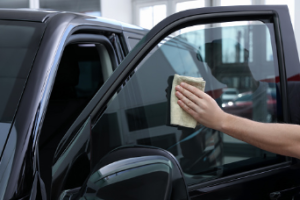It is a fact that window tinting can improve your car’s or home’s appearance. Whether you are looking to cut down on glare or want a shinier look, various types of window tinting can meet your needs.
 Ceramic window tint costs more.
Ceramic window tint costs more.
Ceramic window tinting Auckland costs more than other types, but it offers many benefits, including improved performance, aesthetics, and safety. This type of tint is ideal for people who want a more durable, longer-lasting, and more effective solution than conventional window films.
Ceramic window tinting is a thin film coated with microscopic ceramic particles. The particles have strong heat rejection properties. These particles also help add insulation to the window. By blocking UV rays and infrared light, this product can reduce heat and the internal temperature of a vehicle by as much as half.
Compared to other tinting products, ceramic window tinting offers the best overall performance. It is the best option for someone who wants to reduce heat in the cab. It can block up to two times more heat than other types.
As a result, installing this type of tinting is a significant investment. But whether you want to keep or sell your car, a new ceramic tint will add value to your vehicle.
A high-quality ceramic film can cost upwards of $800. You’ll find that most manufacturers provide a warranty against bubbles and cracks. But be sure to shop around before settling on any one brand.
Other types of window tints are also worth considering. For example, dyed films are typically cheaper to install and offer some of the same benefits. However, they will only last for a short time as other varieties.
The hybrid tint is an effective glare-reduction tint.
While there are many options to choose from when it comes to window tinting, one of the best-performing is a hybrid. These films provide all the benefits of metalised tint without the high cost.
This window tint comprises several dyed layers that help block out heat, improve visibility, and provide privacy. It also has a protective top coat that helps prevent scratches.
The most significant advantage of hybrid window tints is that they can provide all the benefits of metalised tints while minimising light effects. They also give your vehicle the blackest look possible and reduce fading on your interior upholstery.
However, there are some limitations to a hybrid film. For example, it is less effective at blocking radio waves than a pure metallised product. In addition, the shiny finish only lasts for a short time.
When choosing a window tint, you should consider the colour and tint material, the quality of the film and whether you are looking to block infrared light. There are several options, so you should take time and make a well-informed decision.
Another option is the ceramic window tint. This type of window film is made up of non-metallic ceramic particles that are not only shatterproof but also help reduce the amount of solar heat that can get into your car. Unlike hybrid and metallised films, this type of tint is straightforward. However, it would help if you used a laminating adhesive or a specialised tool to ensure that the film sticks to your windows.
Finally, you should check out the crystalline window tint. Unlike other window tints, crystalline window film is entirely transparent.
Metalized tint gives a shinier look.
Metalized window tinting Auckland gives a shinier look to your vehicle. It also offers other advantages, including glare reduction, UV ray blocking and more.
The most significant benefit of metallised window tinting is that it can keep heat out of your car. It allows the interior to remain cool in the summer and warm in the winter. Also, it’s incredibly durable.
Unlike dyed film, metallised film has a shinier appearance. However, there are better choices for radio signals and GPS signals. So if you use your phone often, stick with a different tint.
Carbon tint is another option. While it doesn’t have the shininess of metallised tint, it has a sleek black finish that gives your car a clean, matte appearance.
Although it’s more expensive than dyed films, it’s also more durable. Dyed tint can fade over time and is less effective at blocking heat from the sun. Moreover, it can delaminate, and it can break down if it is exposed to UV light.
Another disadvantage is that it’s not as reflective as other window tints. So while some people like the look of a shiny, mirror-like appearance, there might be a better fit for your car.
There are also hybrid films, which combine the best features of both dyed and metallised tints. These products are the least expensive, but they need to have the shininess and reflectivity of their metalised counterparts.
A metallised film is made by vacuum coating metallic particles onto polyester. It’s then bonded with an adhesive layer. Ultimately, the film is sandwiched between a scratch coat and a protective top coat.
Metalized tinting gives a shinier look and adds strength to your windows. With a few layers, you can achieve a level of darkness that perfectly matches your driving conditions.